The Isles of Scilly are a great place to go birding, particularly in October. While not as good as they used to be, possibly due to a changing climate and a now more northerly atlantic storm track taking more transatlantic vagrants further north, exciting birds do still turn up. St Mary’s is the main island, where most birders have historically stayed, but I have been visiting Tresco for almost twenty years now. This October half term was no exception and once again we spent a week on the island.
 Little Bunting – the first bird at Borough Farm, Tresco
Little Bunting – the first bird at Borough Farm, Tresco
The tone was set on the first full morning, on 21st October. Walking round the fields at Borough Farm, a small bird flew up from a weedy strip and landed in the hedge the other side. It was perched face on, but the fine black streaks on the breast and chestnut cheeks confirmed it was a Little Bunting. It has been a good year for this species in the UK, a scarce visitor from the north-eastern European taiga on its way to its wintering grounds in India and SE Asia. It is always a nice bird to find.
The Little Bunting hung around in the same field for several days. We had to wait until 24th October for our next good find. Walking around the fields at Borough Farm with fellow Tresco regular Steve Broyd, my son Luke and another of the visiting birders, we happened to be discussing how it is a good many years since there had been an Olive-backed Pipit on Tresco. They seem to still be regular on the other islands, but for some reason they don’t seem to turn up here (perhaps it is the lack of habitat, more on which later…). A couple of minutes later and a pipit flew up ahead of us from some weeds and dropped straight back down out of view. There had been a Tree Pipit here a couple of days previously so we had to check it out properly – as it crept into view, we could see it was indeed an Olive-backed Pipit, with a bold pale supercilium and pale spot on the rear of the ear coverts.
 Olive-backed Pipit – the first we had seen on Tresco for many years
Olive-backed Pipit – the first we had seen on Tresco for many years
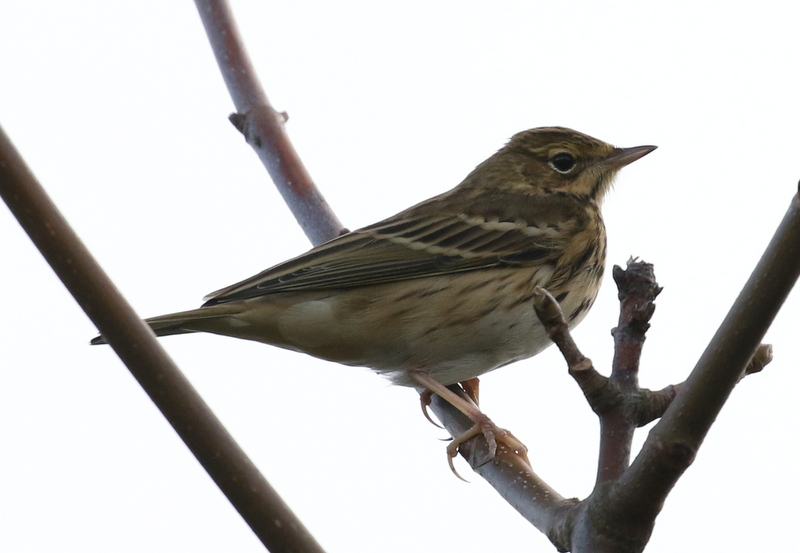 Tree Pipit – had been around Borough Farm a couple of days earlier
Tree Pipit – had been around Borough Farm a couple of days earlier
The Olive-backed Pipit flew up into the hedge and perched in the branches preening, where we could get a good look at it. Then it dropped back down into the field further along. When we had first seen it, we had noticed a second bird in the same field. As we walked a little further up the track, a Little Bunting flew out and landed in the hedge behind us.
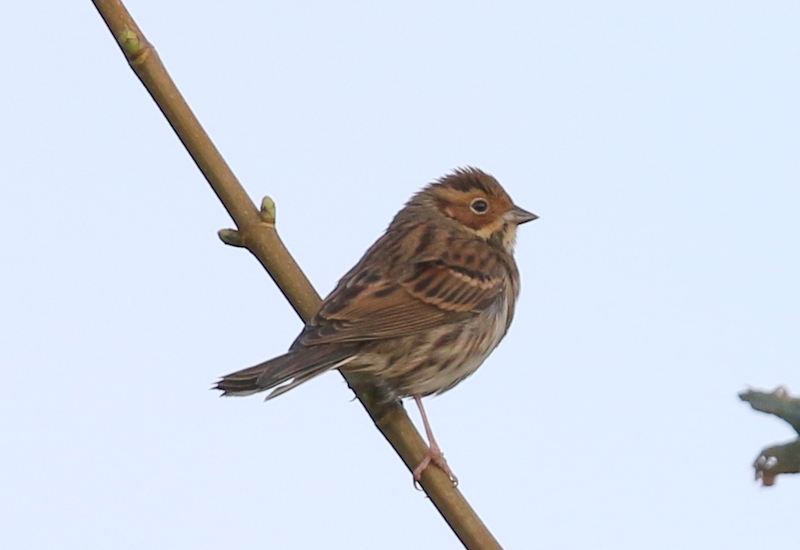 Little Bunting – a second bird at Borough Farm
Little Bunting – a second bird at Borough Farm
We had just seen the first Little Bunting fly back to its favoured field – could this be a second bird? I saw this bird again in the same place in better light early the next day and it looked much duller than the first Little Bunting. However, it was not until late that afternoon that our suspicions appeared to be confirmed and we found two Little Buntings feeding together.
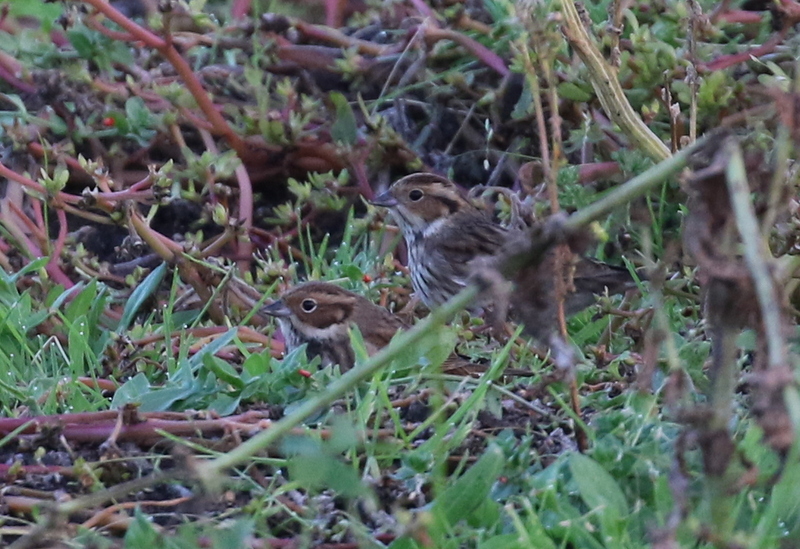 Little Bunting – two birds together at Borough Farm on 25th
Little Bunting – two birds together at Borough Farm on 25th
That may not be the end of the story. Looking closely at the photos, it appears that neither of the two Little Buntings on 25th October was the bird which we had first seen earlier in the week – it seems that there may have been three Little Buntings in total at Borough Farm that week!
The other highlight of the week on Tresco also appeared on 25th. There had been a Pallid Swift seen on St Mary’s the previous afternoon, but there was no sign of it there that morning. It had been mostly bright and sunny but early in the afternoon, a bit of cloud descended. I happened to bump into Steve Broyd along Pool Road and, as we stopped for a chat, Steve announced that he could see a Swift heading our way. Sure enough, it was a Pallid Swift, possibly the St Mary’s bird relocating but perhaps not impossible that it was a different one.
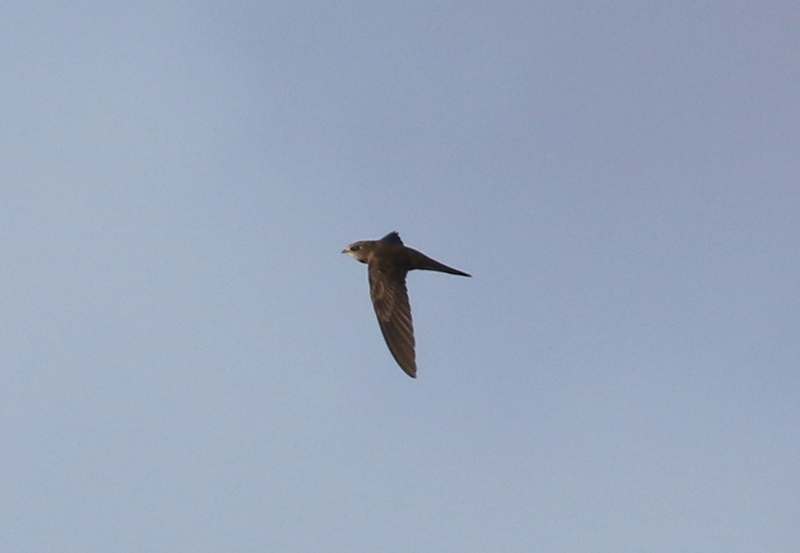 Pallid Swift – spent the afternoon of 25th October over Tresco
Pallid Swift – spent the afternoon of 25th October over Tresco
The Pallid Swift spent a several minutes hawking over the fields along Pool Road. As it banked and turned, it caught the light and we could see its overall brown plumage tone, the prominent white throat patch and pale face highlighting the dark ‘alien’ eye. Reeling off a few photos, I managed to capture the spread tail, with the outer tail feather (t5) short, not noticeably longer than the next one (t4). All good features of Pallid Swift.
It drifted off higher as the cloud blew through and spent an hour or so flying up and down over the trees on Middle Down. Then later in the afternoon, we found the Pallid Swift again over the other side of the island, over Old Grimsby.
One of the drawbacks of staying on Tresco is that it is not so easy to get to one of the other islands if something good turns up. There were lots of quality birds on St Mary’s and St Agnes, but unfortunately none lingered long enough for us to get over to see them this year – or even survived long enough. A Pale-legged or Sakhalin Leaf Warbler might have been the bird of the trip if we had seen it but was sadly found freshly dead on St Agnes on 21st, apparently having flown into a greenhouse window.
Two Red-flanked Bluetails were on the islands also on 21st, one on St Mary’s and one on St Agnes, but neither was present the following day. A reported Siberian Stonechat on St Mary’s the following day was misidentified and it was only later that evening, after it had departed, that it was correctly identified as a Caspian Stonechat from photos. A Rustic Bunting was also only seen very briefly on St Mary’s that same day.
A report of a probably Dusky Thrush on St Mary’s on 26th at least came out early enough for us to catch the boat over. Unfortunately it was only seen by one observer and promptly disappeared before we – or anyone else from St Mary’s – could get there. We did have a very pleasant day on St Mary’s, the highlight of which was seeing two more Olive-backed Pipits in fields at Old Town.
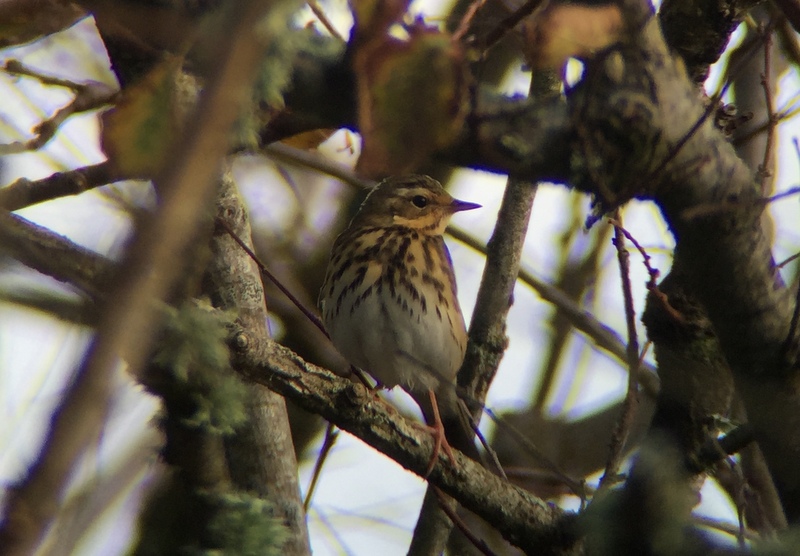 Olive-backed Pipit – two were on St Mary’s on 26th but there had been three on 25th
Olive-backed Pipit – two were on St Mary’s on 26th but there had been three on 25th
A possible Asian House Martin reported on St Mary’s late on 27th was relocated at Innisidgen on the morning of 28th. We were due to leave later that day anyway, so had to make a quick decision and managed to get an earlier boat over to St Mary’s. Unfortunately, by the time we got there it had been identified as just a regular House Martin – we did see a little group of four House Martins along with about half a dozen Swallows.
A possible Eastern Yellow Wagtail was reported at the riding school that morning, which was just a short walk away, so we went to have a look for that. It was showing very well, but unfortunately was just a Yellow Wagtail – it called like one of the western races while we were there and had a dull yellow wash under the tail and a bright yellow patch on its breast. However, otherwise being rather grey, it could perhaps have been a Grey-headed Wagtail instead, the Scandinavian race of Yellow Wagtail. There had been an Eastern Yellow Wagtail on St Mary’s several days before we arrived, but that had obviously departed.
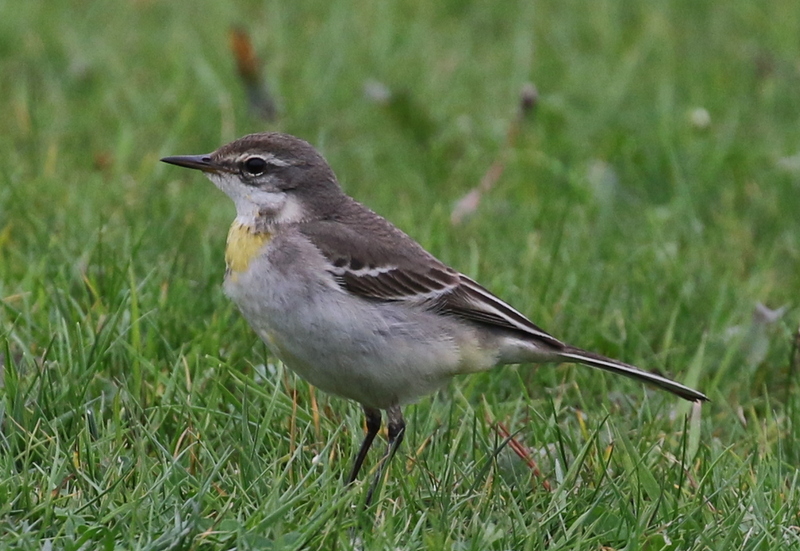 Yellow Wagtail – one of the western races, possible Grey-headed?
Yellow Wagtail – one of the western races, possible Grey-headed?
Although we didn’t find any other rarities during the week, there were plenty of other birds to look at while we searched the island. A selection of photos of some of the other highlights are included below.
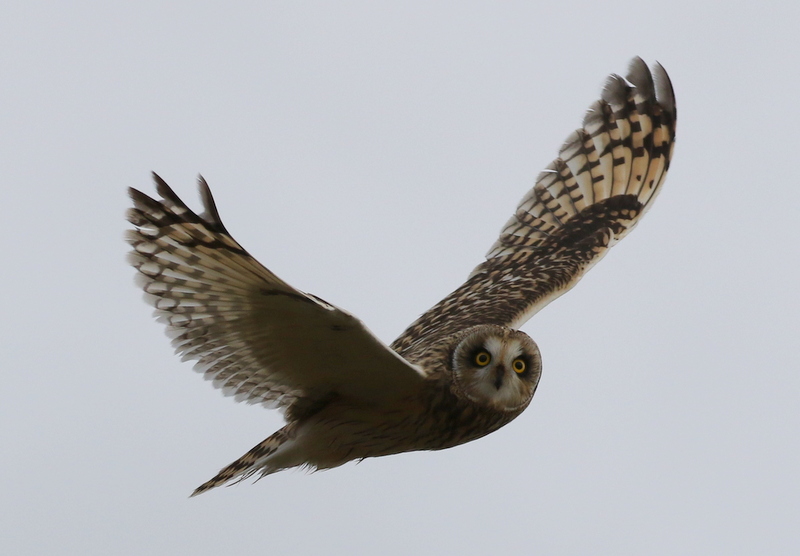 Short-eared Owl – two showed very well, flushed from a roost at the woodpile on 24th
Short-eared Owl – two showed very well, flushed from a roost at the woodpile on 24th
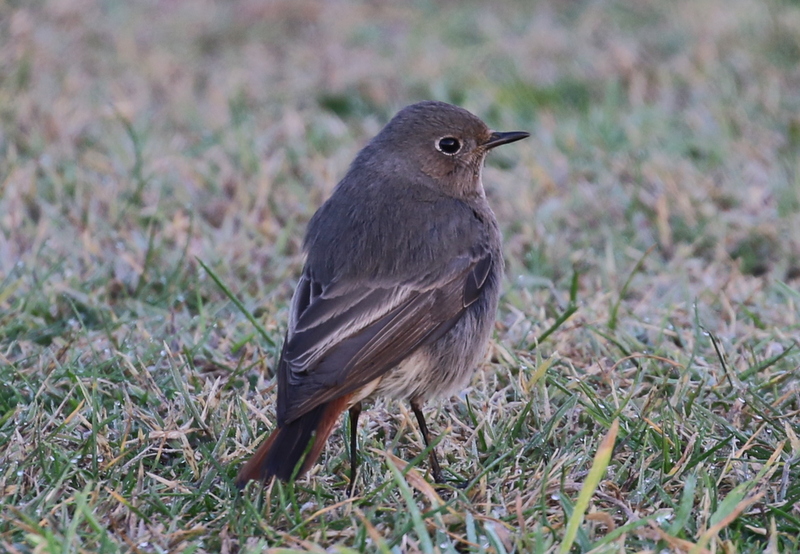 Black Redstart – one or two most days, but with larger numbers on 24th & 28th
Black Redstart – one or two most days, but with larger numbers on 24th & 28th
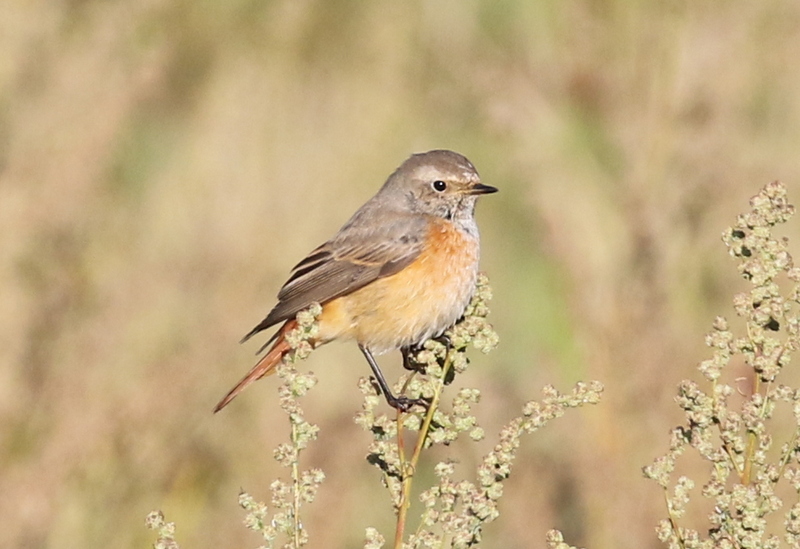 Common Redstart – this 1w male spent most of the week at Borough Farm
Common Redstart – this 1w male spent most of the week at Borough Farm
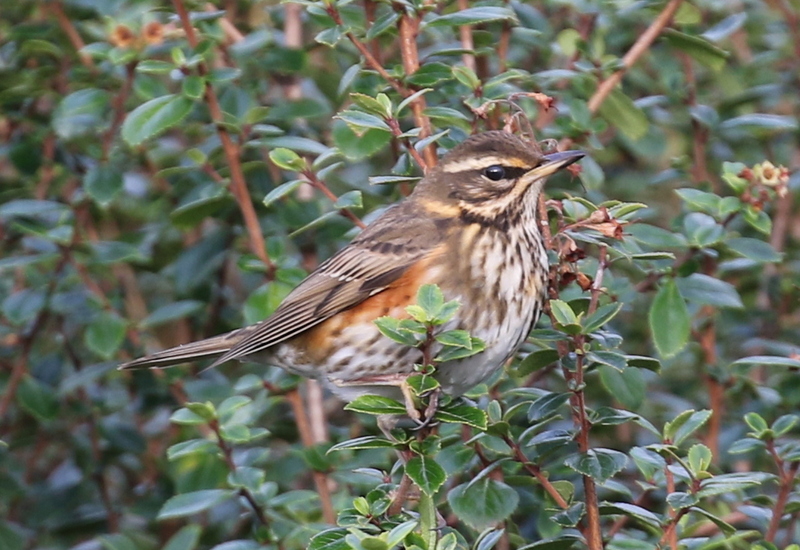 Redwing – good numbers of thrushes passed through earlier in the week
Redwing – good numbers of thrushes passed through earlier in the week
 Ring Ouzel – two came in with the other thrushes on 21st
Ring Ouzel – two came in with the other thrushes on 21st
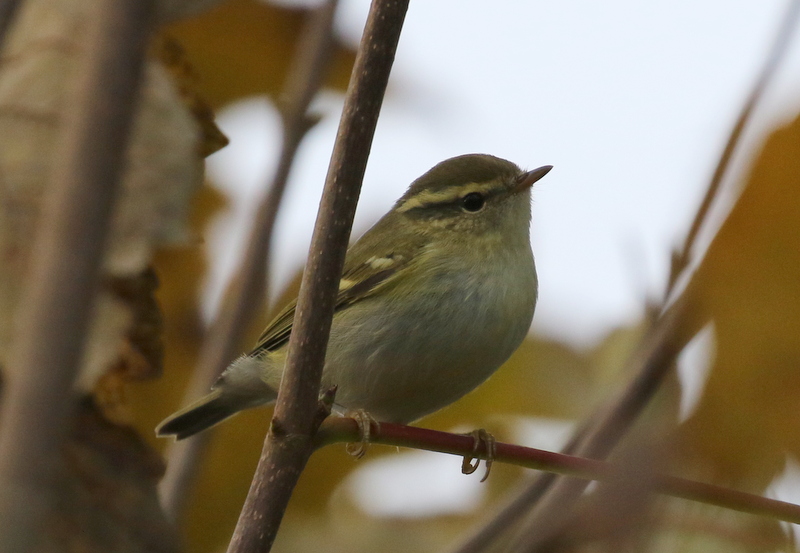 Yellow-browed Warbler – seen daily, present in very good numbers this year
Yellow-browed Warbler – seen daily, present in very good numbers this year
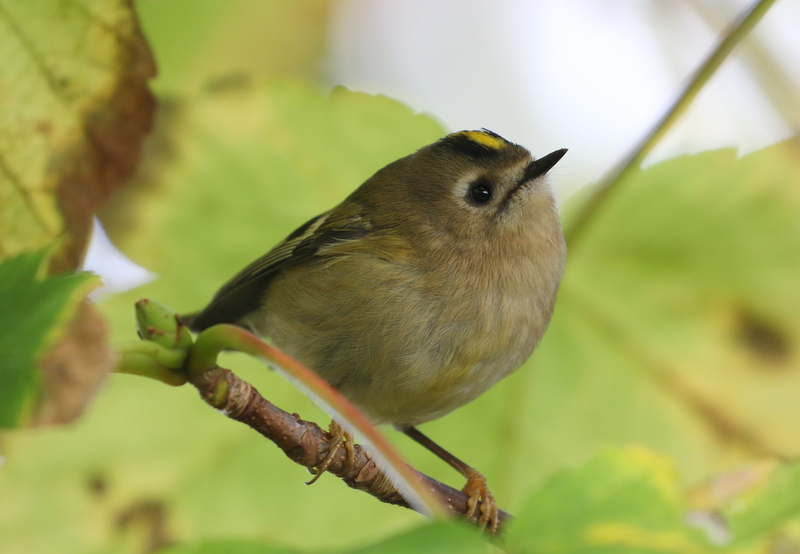 Goldcrest – as usual, there were plenty around the island
Goldcrest – as usual, there were plenty around the island
 Firecrest – 1 or 2 were seen on several days
Firecrest – 1 or 2 were seen on several days
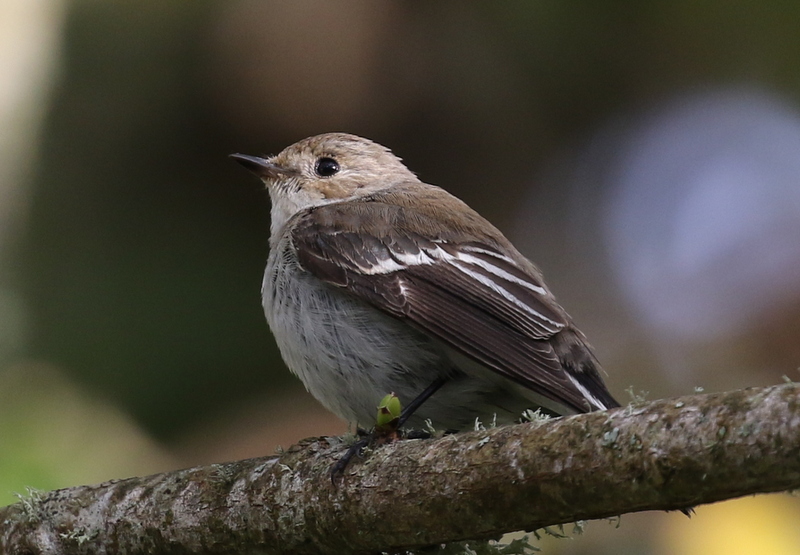 Pied Flycatcher – a late bird, lingering in Abbey Wood for several days
Pied Flycatcher – a late bird, lingering in Abbey Wood for several days
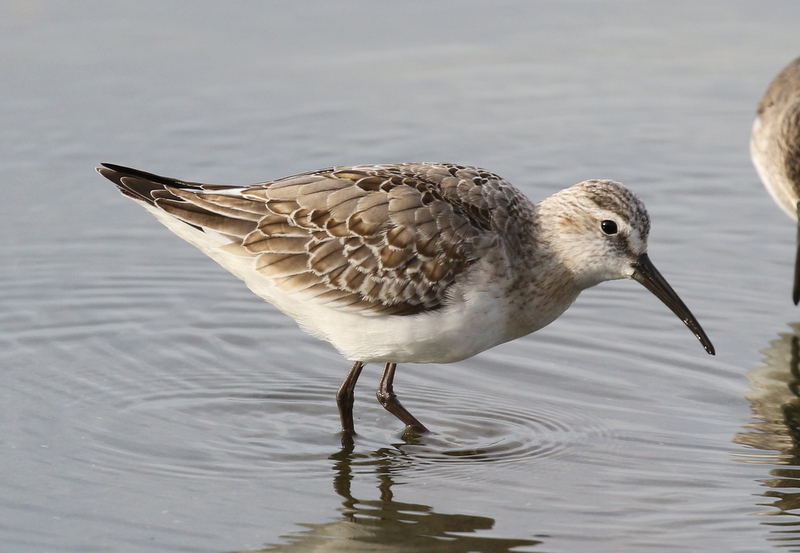 Curlew Sandpiper – on Abbey Pool all week, sometimes with two Dunlin
Curlew Sandpiper – on Abbey Pool all week, sometimes with two Dunlin
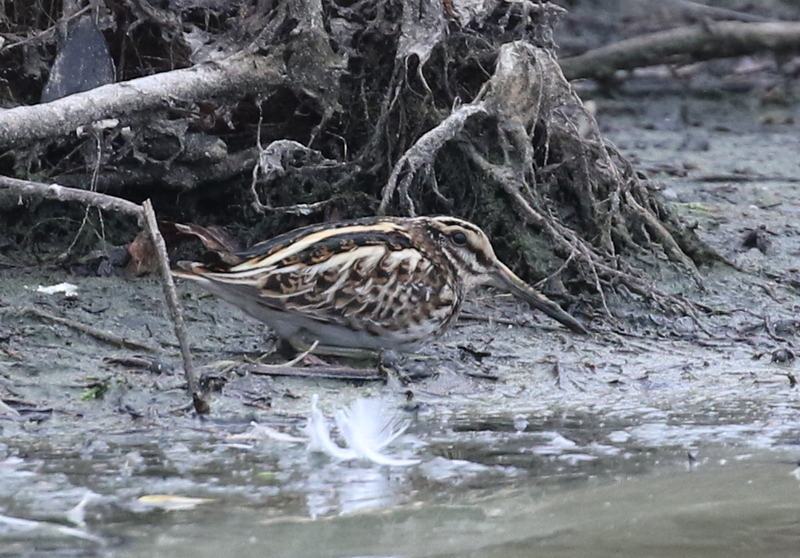 Jack Snipe – one or two were on Abbey Pool
Jack Snipe – one or two were on Abbey Pool
 Greenshank – 22+ on Tresco, but this one confiding bird was on St Mary’s at Lower Moors
Greenshank – 22+ on Tresco, but this one confiding bird was on St Mary’s at Lower Moors
Borough Farm has been one of the best places for birding on Tresco for the last few years, and this was the case again this year, hosting the 2-3 Little Buntings and Olive-backed Pipit while we were there, as well as many commoner birds. Most of the rest of the estate has been vigorously tidied up – now looking as smart as a home counties golf course! Gone are the weedy bulb fields along Pool Road, for example, replaced by improved grassland for cattle grazing which is regularly mown or replanted. Several of the hedges were removed to make larger fields and the remaining ones are regularly flailed to a nice smart square shape. Unfortunately, all of this renders this area all but useless for birds. Other parts of the island have been similarly tidied up. Tresco used to be one of the best islands for rarities, but now struggles in comparison with St Agnes or St Mary’s. Lack of habitat is probably one of the main reasons.
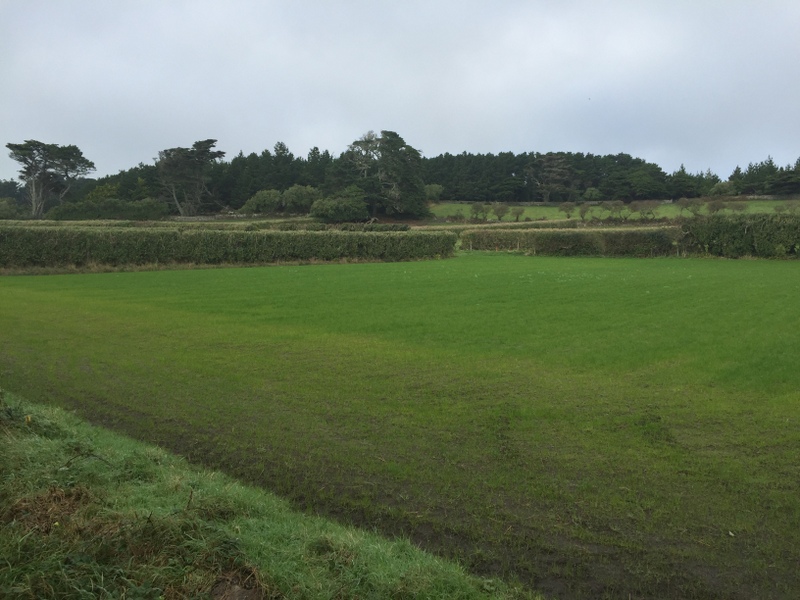 Tresco – the fields along Pool Road, now improved grass and tidy hedges
Tresco – the fields along Pool Road, now improved grass and tidy hedges
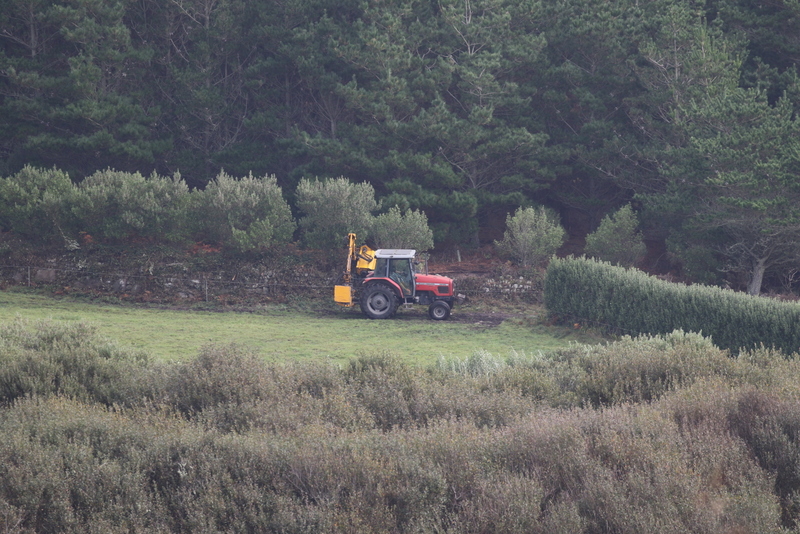 Flailing the hedges – one of the regular activities designed to keep the estate ‘tidy’
Flailing the hedges – one of the regular activities designed to keep the estate ‘tidy’
Borough Farm is the only remaining place on Tresco where there are still traditional bulb fields and the combination of weeds and overgrown hedges, including some large sycamore hedges, act as a magnet for any birds visiting the island. Unfortunately Tresco Estate has decided to take back the farm later this year. At this stage, we do not know what the estate plans to do with the land but given that they gave up growing bulbs many years ago it seems unlikely it will be kept in its current state. Probably it will be tidied up and put down to grass, in line with the rest of the estate.
It was therefore very sad walking round Borough Farm for the last time this year, looking at the fields and reminiscing about all the great birds I have seen here over the last twenty years, not knowing what it will be like in the future. Perhaps it is finally time to call it a day on my visits to Tresco?
 Borough Farm – the contrast is clear, weedy fields and overgrown hedges
Borough Farm – the contrast is clear, weedy fields and overgrown hedges
 Borough Farm – the Olive-backed Pipit and one of the Little Buntings were in here
Borough Farm – the Olive-backed Pipit and one of the Little Buntings were in here
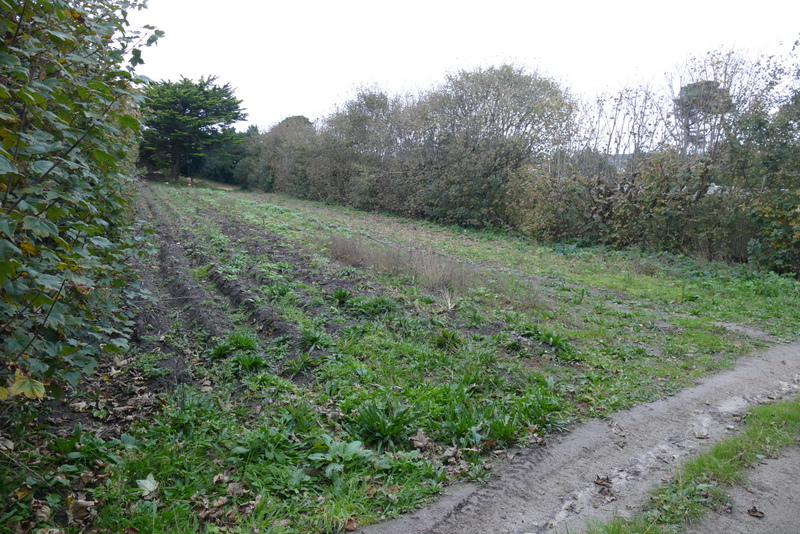 Borough Farm – the Olive-backed Pipit also spent some time in this field
Borough Farm – the Olive-backed Pipit also spent some time in this field
















